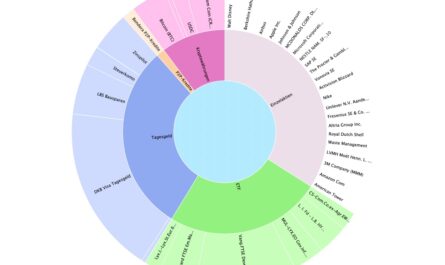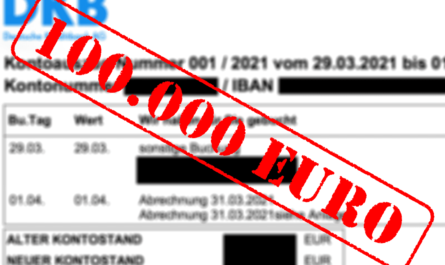The trading business is not an easy one – especially at the beginning, but especially at the end. The entire industry is really just out to constantly pull money out of their clients’ pockets. It starts with the brokers and debt providers and eventually ends with you.
Brokers that rip you off
While some brokers lured for a long time with very unfair products, such as binary options, with quick profits, but actually had the clear advantage as in the casino, they earn predominantly when their customers trade and thus go as often as possible into the risk. Especially black sheep among CFD brokers even earn only when their customers lose. They do not hedge but or do not forward the positions to the liquidity providers in the first place. As a rule, depending on the financial product, a fee is charged for each trade opening and closing – regardless of whether the trade was successful in the end or not. In CFD trading, a percentage lending fee is also charged for leverage.
This is all money that the trader has to earn additionally, which makes his own profitability more difficult. Of course, it is legitimate for brokers to be paid for their service. In Germany, they are even obliged to disclose how many of their clients lose money in the long run. In most cases, it is over 85% – only the minority manage to make money in the long term through daily stock market trading.
High pressure makes profitability difficult
In the case of debt providers, this is even particularly perfidious: knowing that the majority will lose money anyway, they entice customers with high account sizes and deliberately allow substantial position sizes, which are certainly not in relation to healthy risk management. With them, customers must first prove that they can trade. For the first month, and thus for about 20 trading days, they usually pay a three-digit amount to start this test. If a rule is broken, access is immediately blocked and the account must be reset for a fee in order to start the test all over again. A rule break can be exceeding a daily drawdown or trading at wrong times as well as not following a scaling plan.
If you don’t make the profit target within a month, you have to add the same amount again. This further increases the pressure on the trader and almost forces him to take more risk, which in the end increases the probability for the provider that the client will lose his account again.
Once the trader has passed the test, he runs the risk of losing the account due to a rule violation with every subsequent trade. This is true even if one has built up a financial safety buffer. Sure, if you can stick to all the rules and manage to do so for months, you can claim to be a profitable trader. For the provider, a strict set of rules also means risk minimization in return. I have tried to go into leverage a total of four times, sometimes extending several months and resetting here and there. That cost me several hundred euros.
The head is the biggest obstacle
The reason why I kept failing in the evaluation was my head. As soon as I was several hundred euros behind, which can happen quickly due to the possible position sizes, I started to fight with myself internally and tried to recoup the loss as quickly as possible, just to stay within my plan to pass the debt audit within a month. I opened trades that made no sense, I used position sizes that did not correspond to sound risk management.
Even with very small accounts and sums, I was unable to get through this emotional brainfuck. The trailing drawdown or even scaling plan required by many have the consequence that you can theoretically lose the account even if you have not made a single euro loss. If you quickly draw your trades to breakeven and let the position run to end up with a winner or a neutral trade, you are continually minimizing your drawdown.
Since I moved into equity with a small account, it works significantly better for me. In principle, I no longer have rules to follow that make my life as a trader difficult. I can finally let my winners run and not be forced to lock in a certain profit per day per trade just to avoid the next month’s payment.
I risk about 15 to 25 euros on average – an amount where the world won’t end for me if I lose it. My trading has become much more relaxed.
Acquiring knowledge particularly difficult
But even before these – possibly last steps towards becoming a full-time professional trader – the industry shows you how dirty it is. You can’t just take an advanced training course or even an apprenticeship and be a profitable trader from then on. You are forced to acquire all your knowledge yourself and suck up any information from forums, YouTube or books, especially in the early stages.
Many may have purchased some indicators in their early days, which promised to become a profitable trader. This costs not only a lot of money, but also time. In general, mainly only dreams are sold. There are some coaches on the Internet who advertise that they can live a great life through their approach. In reality, however, they don’t make money through their own trading, but by selling the video courses, some of which go into so little depth as to work at all.
You’ll meet some frothy mouths out there – watch out who you transfer your hard earned money to and what you’ll sacrifice your time for. Ask for concrete evidence up to and including real broker statements. I can only recommend a few coaches in the German-speaking world and those are mainly Eugen Denisenko and Ivan Brzovic.
20 % Technology, 80 % Emotion
What then remains is the daily battle with one’s own emotions. Trading is 20% technique – which is quickly learned – and 80% psychology. That is the real crux of the matter. If you’ve lost three times in a row, you still have to be able to muster the courage to open a trade a fourth time. Statistically, you may be able to rationally get around this very well, but in practice you don’t always find it easy. Also to be able to stop at profits or losses, may be learned. If you constantly have to prove your ego right and continue to trade in the same direction after every loss without analyzing again, or euphorically increase the position size after a winning streak because you are now a professional trader, sooner or later you will really have to fight with your emotions.
Fear and greed are the biggest enemies on the stock market.
Keyfacts
- unfair financial products lure with high profits
- brokers have some fees that have to be earned additionally
- debt providers increase the pressure emotionally enormously
- knowledge acquisition is difficult
- many coaches sell dreams and live exclusively from their price sales
- Trading is 20 % technique and 80 emotion








